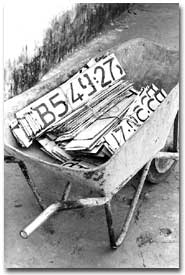|
||||||||||||
|
|
||||||||||||
|
|
||||||||||||
Urban Street Addressing |
||||||||||||
|
||||||||||||
|
Many cities do not have a coherent system of addresses. Street addressing makes it possible to locate a lot or dwelling on the ground - that is to define its address using a system of maps and charts. The addressing system is not a substitute for a cadastral-type system of coordinates, but it can be a complementary to such a system. The two systems can be introduced together and will supplement each other at every stage. Purposes Addressing makes it easier to: a) locate residents and their homes by means of an address system that can be used by the people themselves and by government officials, concessionaires, and other service providers; b) operate urban services (ambulances, fire trucks, taxis); c) enforce collection for user-pay services, in particular those provided by utility concessionaires [water companies, electrical companies]. Steps for Implementation
Implementation Addressing generally falls to the municipality, which will be the contract manager of the operation. Implementation is split among municipal services, consultants, and companies. The municipality may set up a unit to manage its involvement. The unit can be an appendage to an urban project and then be gradually integrated into municipal services. There are two phases: - Implementation: The bulk of funding is committed at this stage, and the various players are encouraged to take the initiative so that the operation can be completed as quickly as possible. The mandate of the unit during the implementation phase will be to:
The work of codifying, mapping, promoting public awareness, and training will typically be performed by consultants. Conditions for success Sensitizing the population through radio, television, and the press is vital. The effort must be repeated, sometimes for several months. The message should emphasize how useful the system will be for delivery of public services (ambulances, fire trucks) rather than calling attention to the potential for easier tax collection. Priority should be given to regularized neighborhoods where the chances of success are greatest. In the poorer, underserved settlements, the assigning of addresses is complicated and can even be taken as implicit recognition of squatter rights. Output The link to improvements in local tax systems occurred only gradually in addressing experience. The most interest comes from utility companies (water, electricity) who are often happy to cooperate and take part in the work. An address system makes it simpler to identify the tax base and in particular its business component. It is a good idea to involve the utility concessionaires in the addressing operation, as a way of helping them locate their customers. Link to tax/fiscal registries The address registry can be reduced to a simpler version of tax rolls. The directory could include include a listing of ‘doorways’ or taxpayers, each one’s address, the amount owed in taxes, a possible reference to the method of assessment, and an indication of whether the tax has been paid. This same type of registry can be used for property taxes, especially if they take the simple form of an urban tax. |
||||||||||||
|
|
||||||||||||
|
||||||||||||
|
||||||||||||

